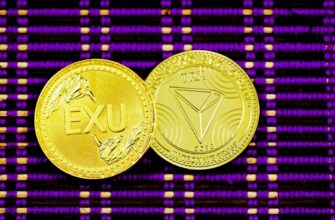Why Pair Exodus with a Hardware Wallet?
Exodus is renowned for its sleek interface and multi-currency support, but like all software wallets, it’s vulnerable to online threats. Hardware wallets add an impenetrable layer of security by storing private keys offline in a physical device. When paired with Exodus, you get the best of both worlds: Exodus’ user-friendly experience for daily transactions and a hardware wallet’s military-grade protection for long-term storage. This combo shields your crypto from hackers, malware, and phishing attacks while letting you manage assets seamlessly through Exodus’ dashboard.
Top 3 Hardware Wallets Compatible with Exodus
1. Trezor Model T (Best Overall)
- Security: Open-source firmware, PIN protection, and passphrase support.
- Compatibility: Works with Exodus desktop app via USB-C. Supports 1,000+ coins.
- Unique Feature: Touchscreen for intuitive transaction verification.
- Ideal For: Users prioritizing transparency and altcoin diversity.
2. Ledger Nano X (Best for Mobile Users)
- Security: Certified secure element (CC EAL5+), Bluetooth connectivity.
- Compatibility: Pairs with Exodus mobile/desktop apps. Supports 5,500+ assets.
- Unique Feature: Bluetooth enables wireless use with Exodus on iOS/Android.
- Ideal For: Active traders needing on-the-go security.
3. Trezor One (Best Budget Option)
- Security: Offline key storage with 2FA recovery.
- Compatibility: Connects to Exodus desktop via USB. Supports major coins like BTC, ETH.
- Unique Feature: Affordable entry point without compromising core security.
- Ideal For: Beginners seeking cost-effective cold storage.
How to Connect Your Hardware Wallet to Exodus
- Update Software: Ensure Exodus and your hardware wallet firmware are up-to-date.
- Connect Device: Plug in your Trezor/Ledger via USB (enable Bluetooth for Nano X).
- Open Exodus: Navigate to ‘Wallet’ > ‘Add Wallet’ > ‘Hardware Wallet’.
- Follow Prompts: Authorize connection on your device screen when prompted.
- Verify Addresses: Confirm receiving addresses on both Exodus and your hardware wallet.
Note: Transactions require manual approval on your hardware device, ensuring hackers can’t move funds remotely.
FAQ: Hardware Wallets and Exodus
Q: Can I use any hardware wallet with Exodus?
A: Exodus currently supports Trezor (One/Model T) and Ledger (Nano S/X). Other brands aren’t compatible.
Q: Will I lose my Exodus portfolio when connecting a hardware wallet?
A: No. Your existing Exodus software wallet remains intact. The hardware wallet appears as a separate, read-only account in Exodus.
Q: Are hardware wallet transactions slower in Exodus?
A: Slightly—each transaction requires physical confirmation on your device. This adds ~10 seconds but is crucial for security.
Q: What happens if my hardware wallet breaks?
A: Use your 12-24 word recovery seed (stored offline!) to restore assets on a new device. Never share this seed.
Q: Does Exodus charge fees for hardware wallet use?
A> No. Exodus doesn’t impose extra fees, but standard blockchain network fees apply to transactions.








